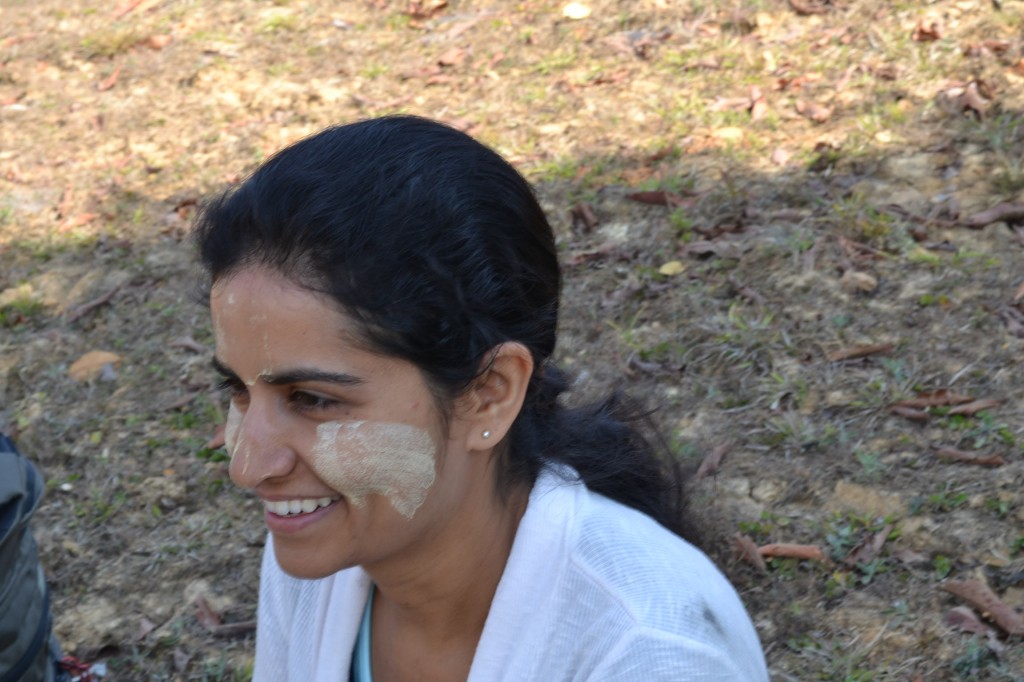People travel for various reasons – adventure, landscape, food, history, culture. Myanmar offers travelers many of these things, but what stood out the most to us were the people. For a country the geographical size of Texas and with the population the size of Ukraine, Myanmar is remarkably diverse. Myanmar has had various countries stake its claim on its lands. It has also been a significant trading port, and been caught in the middle of wars not its own. This history has brought with it the influence of many cultures. Even within the country, there are over 100 ethnic groups, some of which have been heavily involved in one of the world’s longest civil wars. Outsiders such as us who spend only a few weeks here cannot begin to understand the various subcultures. However, on the surface I was able to get a glimpse of the vibrant faces of Myanmar.
One of the first things we noticed when we landed in Yangon was thanaka, a sunblock paste, on nearly every woman and child. The paste is made by rubbing the bark of the thanaka tree on a stone block in circular motions. Add a little water and out comes sun block.
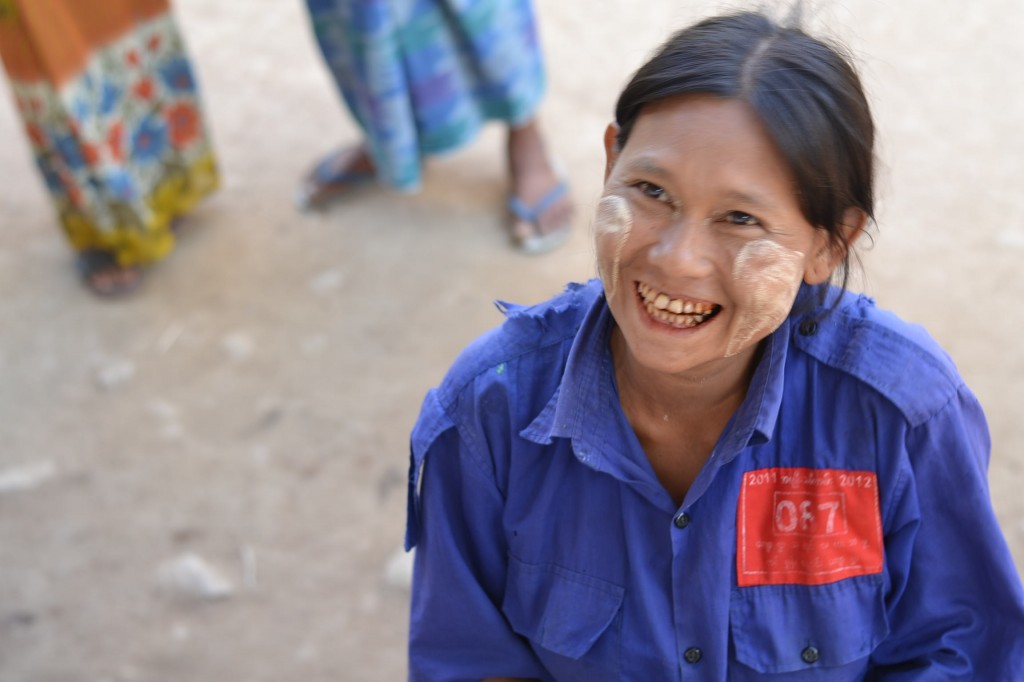
Burmese mothers seem to take particular artistic liberty in applying clown like thanaka patterns to their children’s faces.
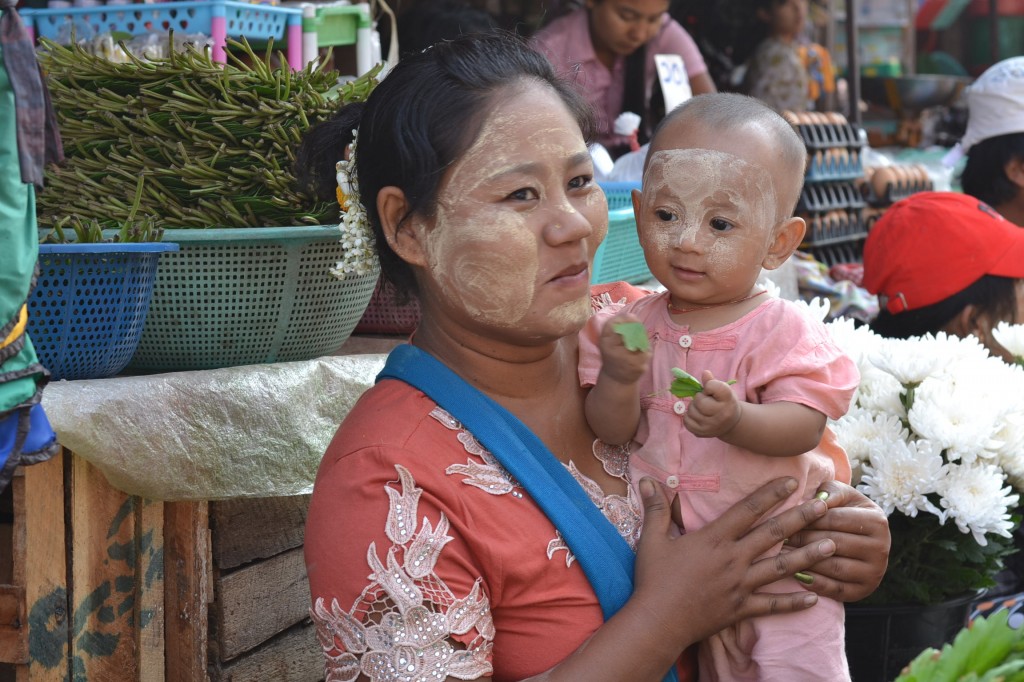
Kayan has not quite mastered the art of photography. When he sees a camera he gets behind the lens to see his picture, not realizing that he first has to stand in front of the lens. His shortcomings aside, it seems universal that kids around the world love getting their pictures taken.
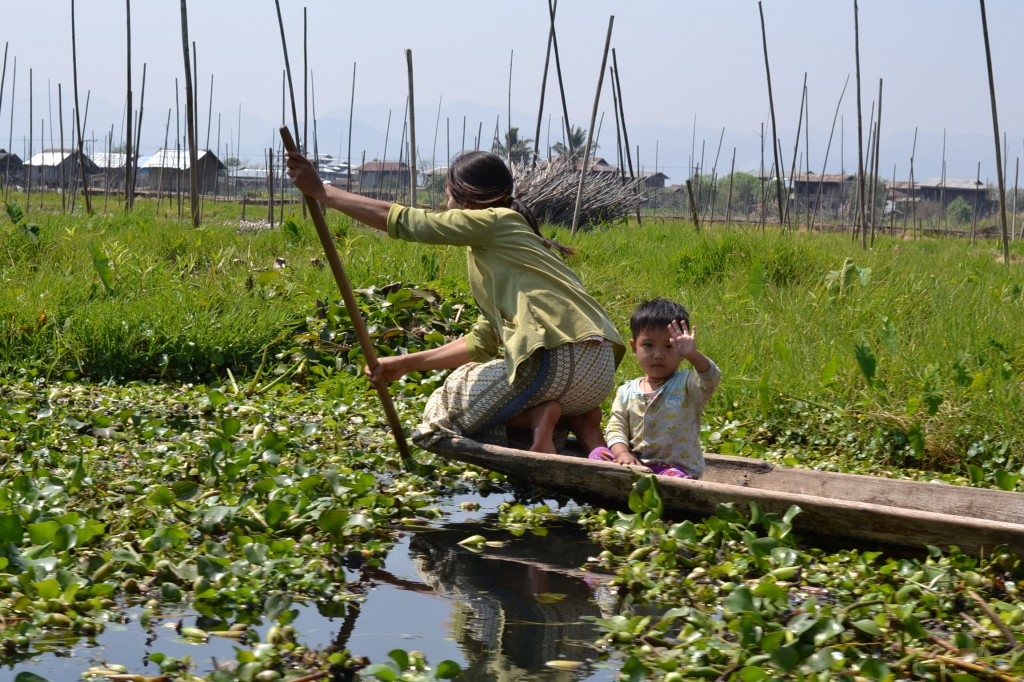
Burmese children, particularly in the villages where digital cameras are not common, get very excited at seeing their pictures. One of our most memorable experiences from Inle Lake was stopping at the local elementary school. The kids greeted us as our boat pulled into the floating playground, each child wearing green pants or skirts and white tops. The uniform is common for every child in a government school in Myanmar.
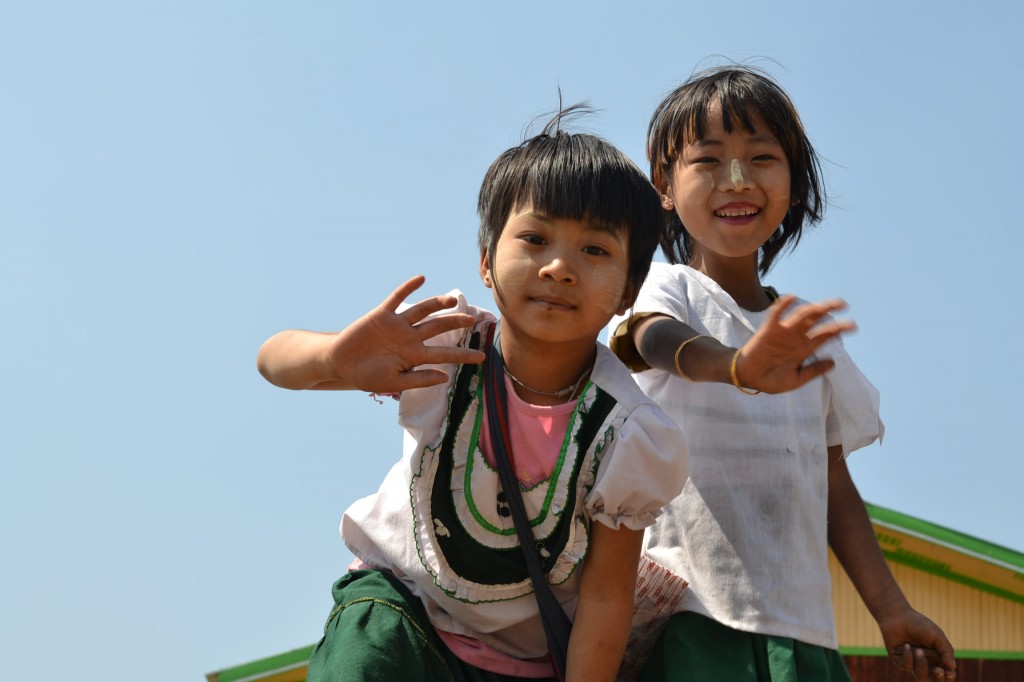
Myanmar remains a majority Buddhist country. In addition to the fact that one apparently can’t turn anywhere without seeing a pagoda or monastery, the faces of Buddhism can be seen in the monks, nuns and novices that make their daily alms rounds. In Thailand, we had to get up at the crack of dawn to witness monks seeking alms, and we did not see any nuns at all in Chiang Mai. By contrast, Burmese monks, nuns, and novices (monks in training) make alms rounds throughout the morning and, particularly in the north, nuns are a very common sighting. Alms rounds are a way for the monastery or nunnery to receive food as well a for Buddhists to make merit in their donation. Most Buddhist households prepare the morning alms for the monks before preparing the meal for the family. I love the sight of monks in saffron robes, but had never before seen Buddhist nuns dressed in elegant baby pink.
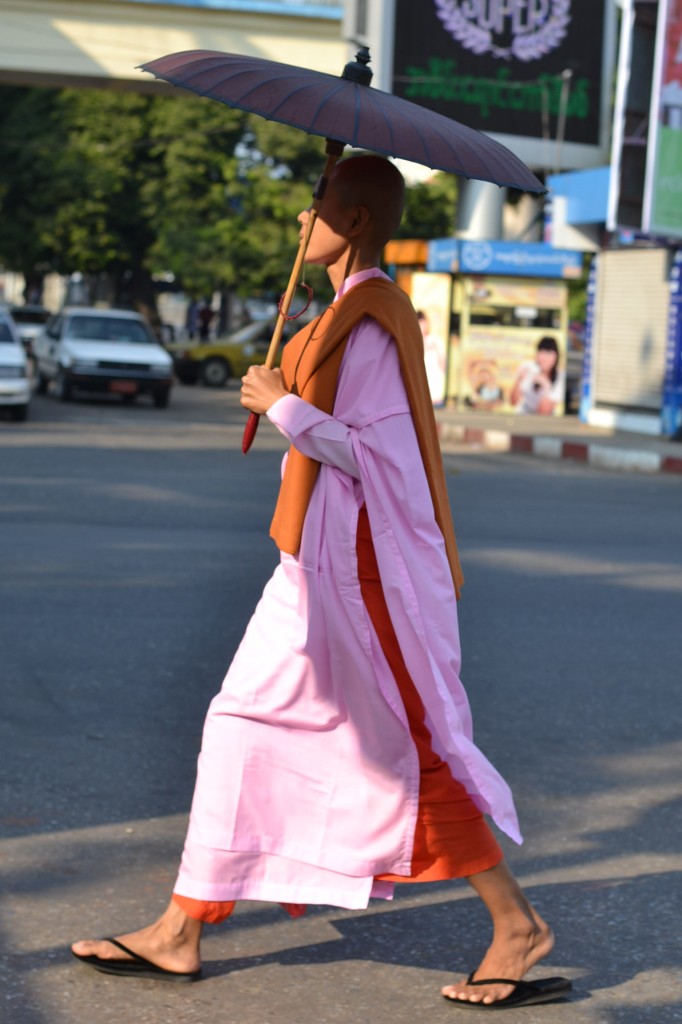
Monasteries and nunneries serve as centers for education and social welfare. Many young novices come from poorer families, some others are orphaned. They are brought to the monestaries and nunneries to be cared for, fed and educated. Once they reach adulthood, they can determine whether or not they want to remain in their orders. Once a week the novice nuns leave the nunnery to collect alms with the older nuns. We saw this little girl running across the street in Yangon after collecting alms from a restaurant.
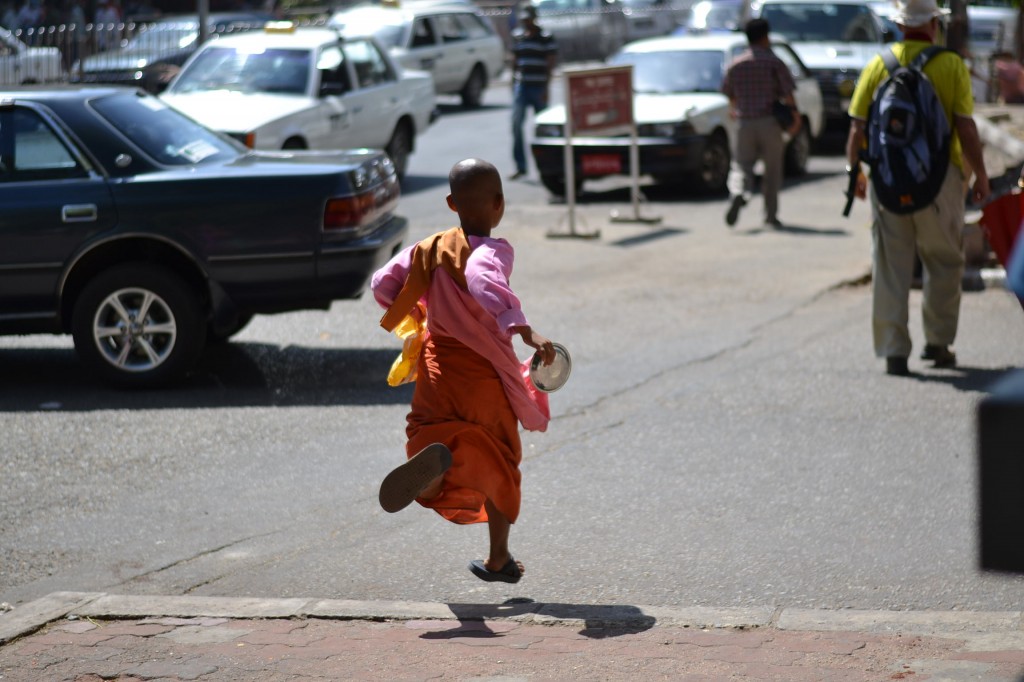
While trekking between Kalaw and Inle Lake, we spent time in minority villages. We met friendly basket weavers and fieldworkers.
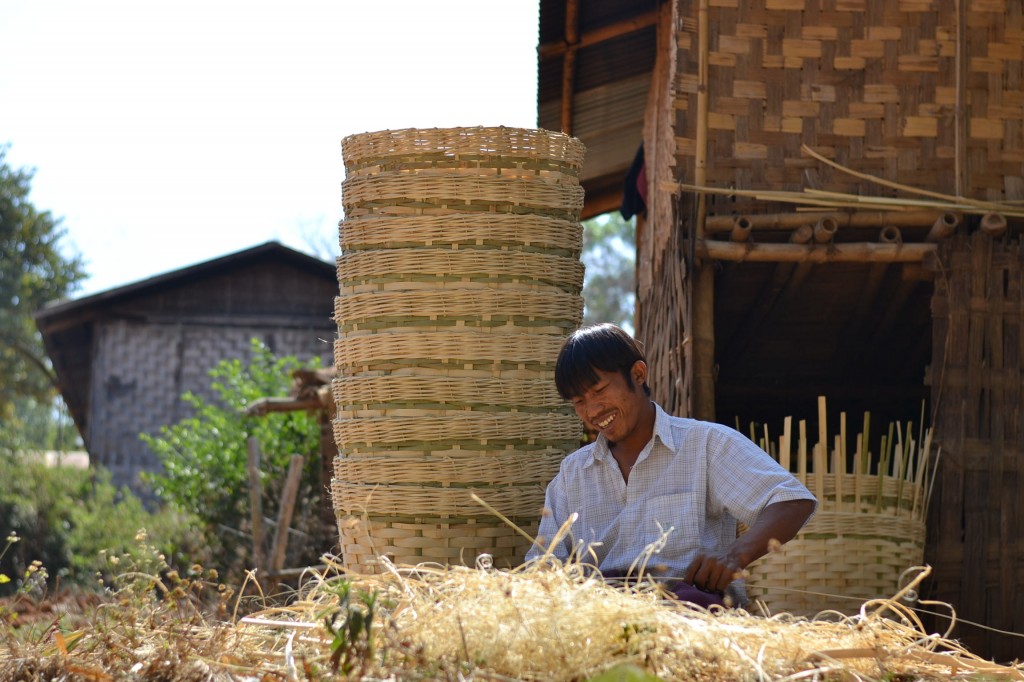
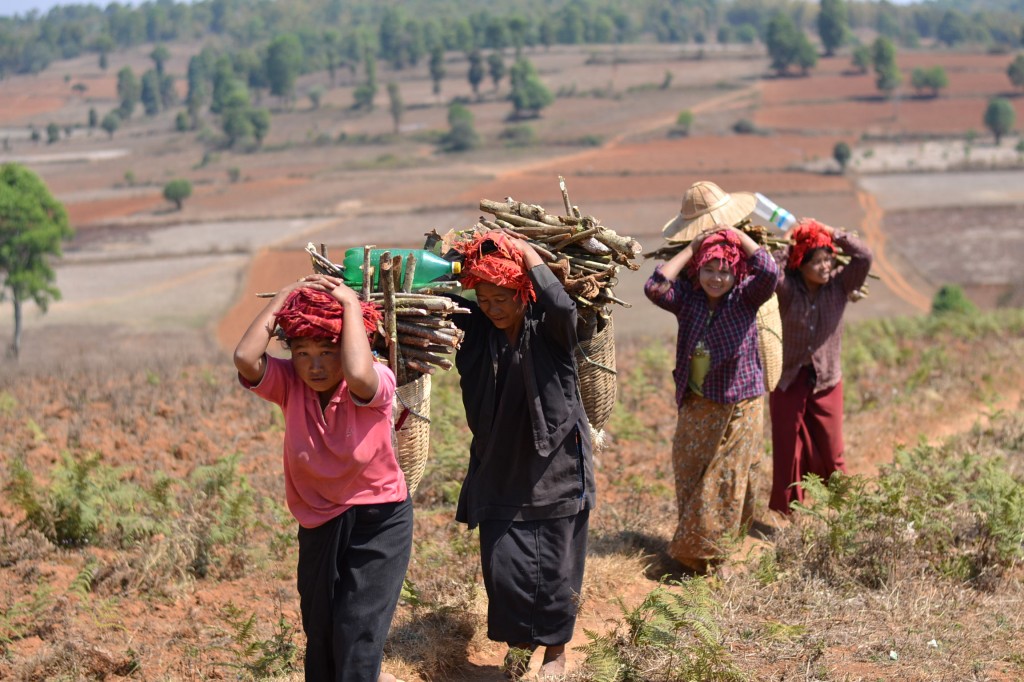
As we saw in elsewhere in Myanmar the women are out doing fieldwork while the men do ‘patient’ work, such as weaving.
By the end of the trip, I was integrated enough into the Burmese way of life that I mastered thanaka application and used it liberally myself.
